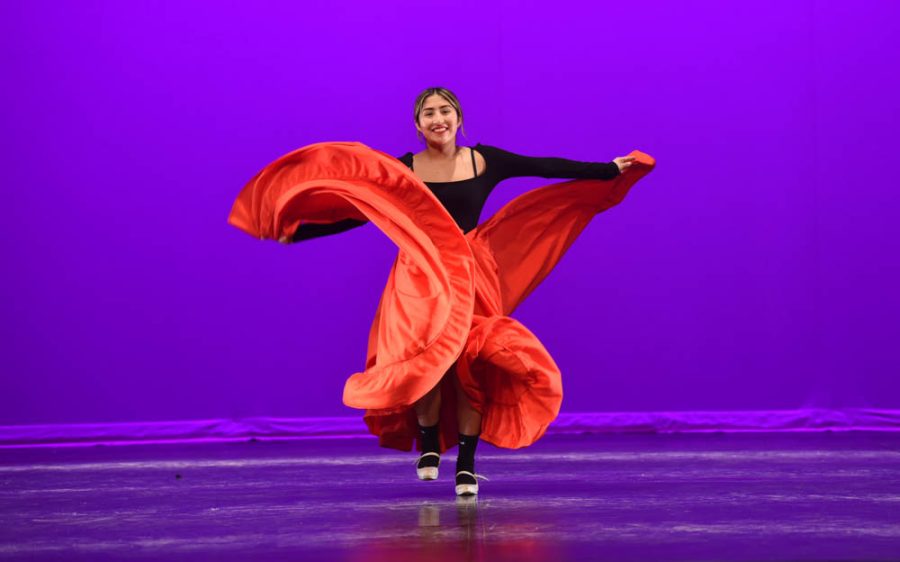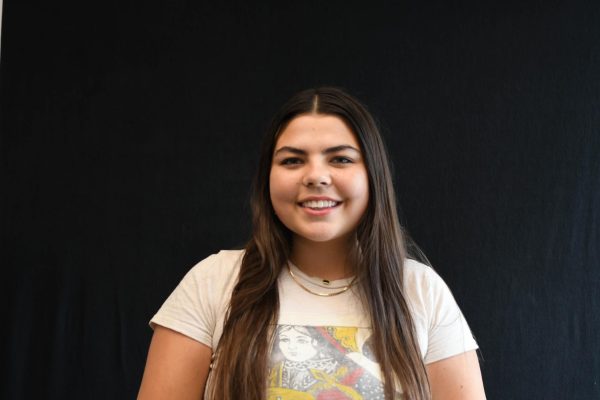Traditional Mexican Dance Honored Through Anali Policarpo
Beginning intermediate dancer, Anali Policarpo performs a Baile Folklorico dance, a dance style that originated from Mexico. The signature colorful skirt twirls to the beat of the song “Colima.”
May 25, 2023
Senior Anali Policarpo is bringing Baile Folklórico into the spotlight. Just this year, at two SJHHS dance shows Fusion and Senior Showcase, Policarpo performed the traditional Mexican dance, as a nod to her family’s culture and heritage.
“I was able to bring my culture into the school, and perform in front of others who don’t know what Baile Folklórico is,” says Policarpo.
Originating in Mexico, Baile folklórico is a traditional dance style that commonly incorporates colorful dresses, ballet-like movements, and folk culture. Policarpo has been learning Baile Folklórico since she was nine. Throughout high school, Policarpo has been a member of the SJHHS dance team, but this was her first year bringing the cultural dance style to the stage.
“It represents my background and where I came from and my parents,” says Policarpo. “I learned more about my dad’s culture in Oaxaca which was really awesome and interesting.”
Baile folklórico includes many different variations of dances that each originate in different regions of Mexico. Some of these regions include Veracruz, Jalisco, and Oaxaca. Each of these dance styles embraces their region’s respective tales, legions, and music.
“Each dance style is very different and unique in its own way. Sometimes they have the same steps but there is more to it in the costumes and headpieces,” says Policarpo.
Policarpo is proud to be able to educate her peers and stay connected to her culture through bailie folklórico.
“I’m also glad to perform in front of people who don’t know it as much. When they come and ask me, I like teaching them about it,” says Policarpo.
She hopes to continue learning the dance style and new things about her culture.


